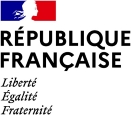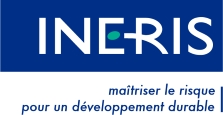Frequently asked questions
Given the wide variety of uses of PFAS, and in the absence of generic alternatives, it is necessary to consider the possibilities of alternatives on an application by application basis. To date, the following applications have been documented: food containers (paper and cardboard), fire-fighting foams, textiles, cosmetics and ski waxes.
PFAS are of concern because of:
- their ubiquitous, persistent and partially irreversible presence in the environment,
- their accumulation in organisms (aquatic mammals, birds, humans, etc.),
- the proven toxic properties of some substances (for example, PFOA and PFOS are classified as "Toxic for reproduction"),
- the suspected toxic or ecotoxic character of other substances in this family
The range of uses for PFAS is very broad. In 2020, a study1 identified more than 200 use categories and subcategories for more than 1400 per- and polyfluorinated substances, including:
- polymerization aids in the production of fluoropolymers,
- surfactants in fire-fighting foams,
- anti-fogging agents in chrome plating,
- waterproofing and oleophobia for:
o textiles
o leather
o materials in contact with food (paper, cardboard...)
o cosmetics
- production of semiconductor components
- production of medical devices,
- co-formulants in:
o phytosanitary products
o biocides
o food additives
o pharmaceutical products
o paints
Fluoropolymers (PTFE, PCTFE, PVDF, FEP...) produced from PFAS (and which can themselves be considered as PFAS) are hydrophobic, oleophobic, electrically insulating and are characterized by a high resistance to chemicals, friction, high temperatures and ultraviolet rays. These multiple properties allow these materials to find applications as coatings (for bearings, seals, pipes, tanks, wires and electronic elements...) in many sectors (aeronautics, automotive, electronics, medical...).
1 Juliane Glüge et al, An overview of the uses of per- and polyfluoroalkyl substances (PFAS), Environmental Science: Processes & Impacts Issue 12, 2020
Over the past decades, short-chain PFAS have been used as alternatives to PFOS and PFOA.
These substances differ from long-chain PFAS in the length of their carbon chain.
Examples of short-chain PFAS:
- perfluorocarboxylic acids with carbon chain lengths between C1 and C7 ;
- perfluoroalkanesulfonic acids with carbon chain lengths between C1 and C5.
Short-chain PFAS are, like long-chain PFAS, persistent in the environment.
From a nomenclature perspective, a PFAS is defined as a substance with at least a perfluorinated methyl group (–CF3) or a perfluorinated methylene group (–CF2–) (without any H/Cl/Br/I atom attached to the carbon atom of methyl or methylene group). This terminology is the result of the harmonization process led by the OECD/UNEP Global Perfluorinated Chemicals (PFC) Group1.
The diagram below shows examples of PFAS structures (Kwiatkowski et al. (2020), Environ. Sci. Technol. Lett. 2020, 7, 8, 532-543):
1 This group brings together experts from OECD (Organization for Economic Co-operation and Development) member and non-member countries in academia, governments, industry and NGOs (Non-Governmental Organization) as well as representatives from other international organizations
UNEP: United Nations Environment Program

